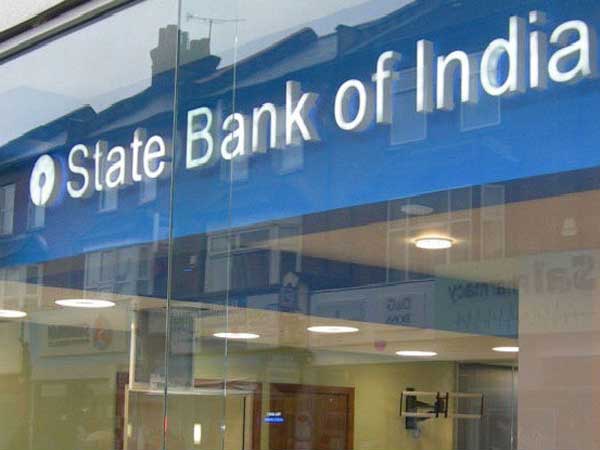These Top 4 Banks Offering FD Interest Rates Up to 6.50%, Comparison Of FD Rates
[ad_1]
Read More/Less
Interest rates lowered
Due to the pandemic, RBI, on behalf of the union government has lowered the interest rate in India, hence the banks are now obliged to offer low-interest rates on FDs. So, here is a list below that will compare the FD rates in the top banks, operating in India.
One must remember, to open an FD investment, one must open an account in a particular bank. Usually, people invest in FDs, when they have a lump sum. But investment below Rs. 2 crores is commonly chosen by Indian citizens, hence, the rates mentioned below are listed on investment less than Rs. 2 crores.

State Bank of India (SBI)
The State Bank of India (SBI) is the largest public sector bank in India, but it offers quite a low level of interest on FDs. The SBI offers 2.90% to 5.40% interest to the general public while offers 3.40% to 6.20% interest to senior citizens. For FD up to 1 year to less than 2 years, the bank’s interest rate for the public is 5.00%, while the rate for a senior citizen is 5.50%. For FD up to 2 years to less than 3 years, the bank’s interest rate for the public is 5.10%, while the rate for a senior citizen is 5.60%. For FD up to 3 years to less than 5 years, the bank’s interest rate for the public is 5.30%, while the rate for a senior citizen is 5.80%. For FD up to 5 years and up to 10 years, the bank’s interest rate for the public is 5.40%, while the rate for a senior citizen is 6.20%.

HDFC Bank
HDFC Bank is offering better interest rates on FDs than the SBI, in some cases. The bank provides interest rates from 2.50% to 5.50% interest to the general public and provides from 3.00% to 6.25% interest to senior citizens. For FD up to 1 year 1 day to 2 years, the bank’s interest rate for the public is 4.90%, while the rate for a senior citizen is 5.40%. For FD up to 2 years 1 day to 3 years, the bank’s interest rate for the public is 5.15%, while the rate for a senior citizen is 5.65%. For FD up to 3 years 1 day to 5 years, the bank’s interest rate for the public is 5.30%, while the rate for a senior citizen is 5.80%. For FD up to 5 years and up to 10 years, the bank’s interest rate for the public is 5.50%, while the rate for a senior citizen is 6.25%.

Axis Bank
Axis Bank’s FD on the other hand is sometimes better than both HDFC and SBI, in long term, and for senior citizens. The bank is offering 2.50% to 5.75% interest to general people while offering 2.50% to 6.50% interest to senior citizens. For FD up to 2 years to less than 30 months, the bank’s interest rate for the public is 5.40%, while the rate for a senior citizen is 6.05%. For FD up to 30 months to less than 3 years, the bank’s interest rate for the public is 5.40%, while the rate for a senior citizen is 6.05%. For FD up to 3 years to less than 5 years, the bank’s interest rate for the public is 5.40%, while the rate for a senior citizen is 6.05%. For FD up to 5 years to 10 years, the bank’s interest rate for the public is 5.75%, while the rate for a senior citizen is 6.50%.

Punjab National Bank FD
Punjab National Bank is another top bank in India that is offering moderate interest rates on FDs. The banks offer 2.90% to 5.25% interest to the public and 3.50% to 5.75% interest to the senior citizens. For FD above 1 year and up to 2 years, the bank’s interest rate for the public is 5.00%, while the rate for a senior citizen is 5.50%. For FD above 2 years and up to 3 years, the bank’s interest rate for the public is 5.10%, while the rate for a senior citizen is 5.60%. For FD above 3 years and up to 5 years, the bank’s interest rate for the public is 5.25%, while the rate for a senior citizen is 5.75%. For FD above 5 years and up to 10 years, the bank’s interest rate for the public is 5.25%, while the rate for a senior citizen is 5.75%.

Comparison and best option
Hence, if you are going to invest in a 5 years’ FD scheme with an interest for the general public (you are not a senior citizen), then Axis Bank can be your choice because they are offering a 5.75% interest rate. Other top banks are offering less than that. On the other hand, for 5 years or more FD for the senior citizens, Axis Bank is offering a lucrative interest rate at 6.50%, which is better than other banks. At a time when interest rates on FDs are low, one should always compare the rates offered by other banks. Additionally, Post Office offers a better interest rate on FD than other banks. So, one can follow post office FD rates too.
[ad_2]










